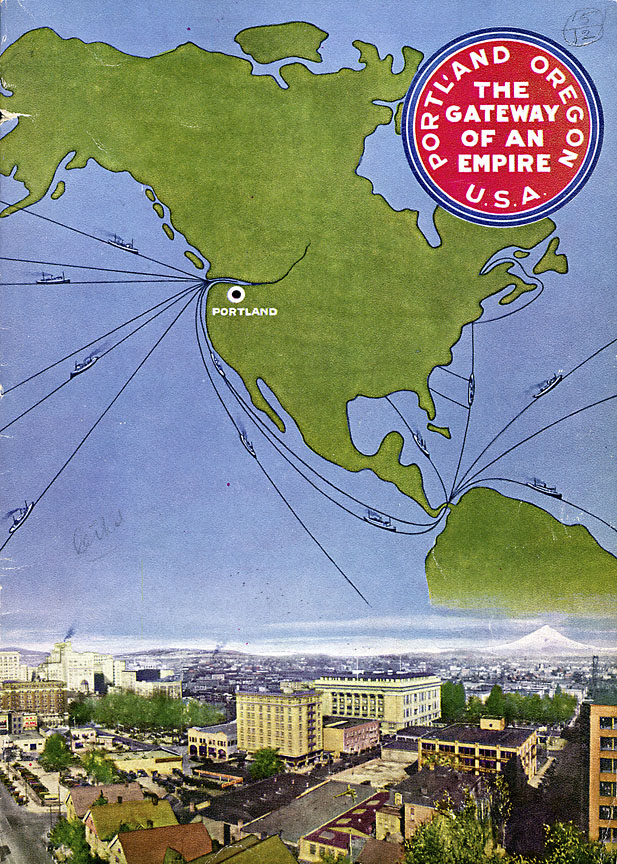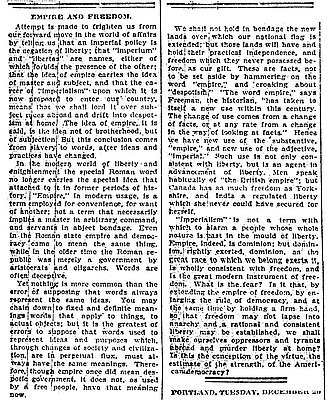- Catalog No. —
- Mss 6000
- Date —
- 1924
- Era —
- 1921-1949 (Great Depression and World War II)
- Themes —
- Trade, Business, Industry, and the Economy, Transportation and Communication
- Credits —
- Oregon Historical Society
- Regions —
- Portland Metropolitan
- Author —
- Port of Portland Commission
The Gateway of an Empire
This 1924 booklet promoted Portland as the natural “gateway” for ship trade between the Pacific Northwest “empire” and markets on the East Coast and in foreign countries. The inside cover asserted that “The World’s Sea Lanes Lead to The Port of Portland.” The port published this booklet, which included trade statistics and enthusiastic reports about Oregon’s export commodities.
In the late nineteenth century, Portland was the largest commerce center in the Pacific Northwest. Farmers, ranchers, miners, and timber companies in eastern Washington, eastern Oregon, and the Willamette Valley all sent their products on steamships down the Columbia and Willamette Rivers to Portland. From there, goods were loaded onto sailing ships for ports in Asia, South America, Europe, and the eastern United States.
Early rail lines through the area followed waterways, in part reinforcing Portland’s trade domination. However, increased rail access and the late 1890s Klondike gold rush helped Seattle become the region’s dominant city and chief commercial port. By 1910, Seattle had 237,194 residents, while Portland had 207,214.
In 1923, Portland’s main exports were lumber and wheat, followed by flour and apples. The city’s largest import item was copra, a coconut oil from Asia that could be used in manufacturing. The second largest import was cement, which also came from Asia.
Written by Kathy Tucker, Cain Allen, © Oregon Historical Society, 2002, 2004.

